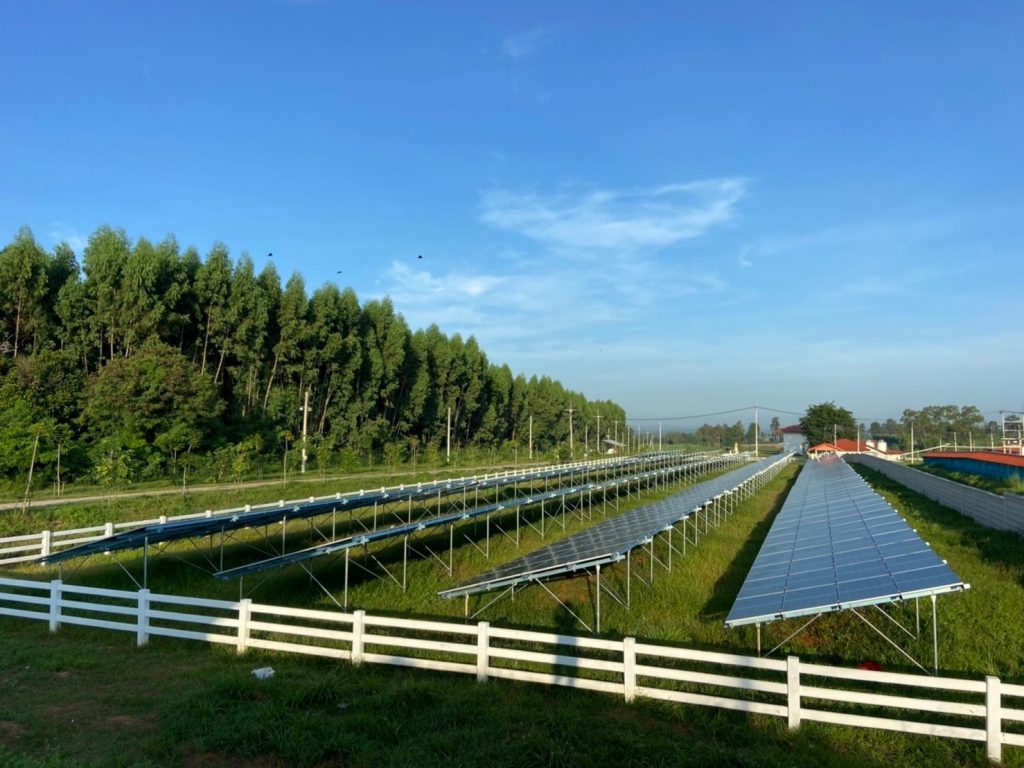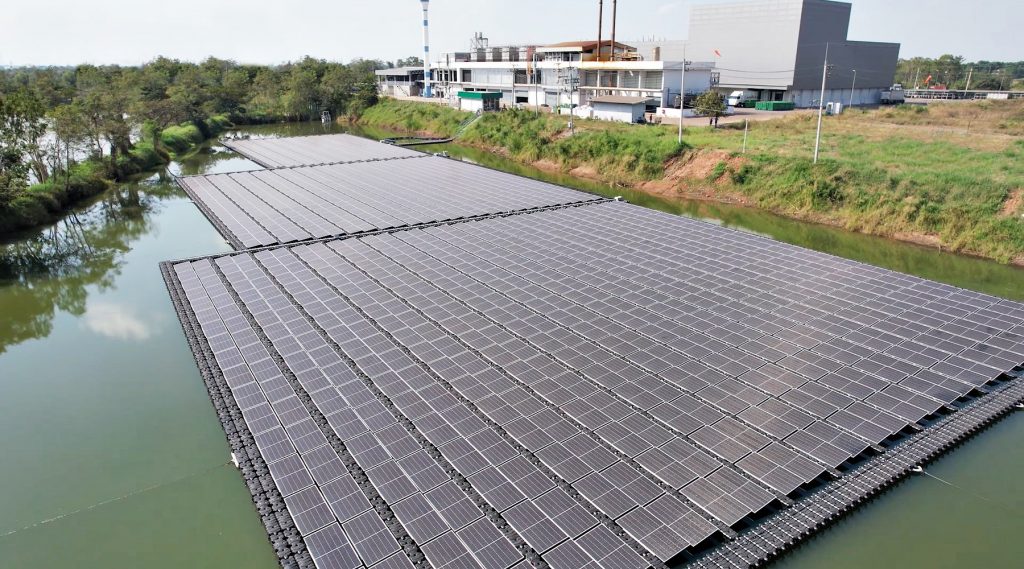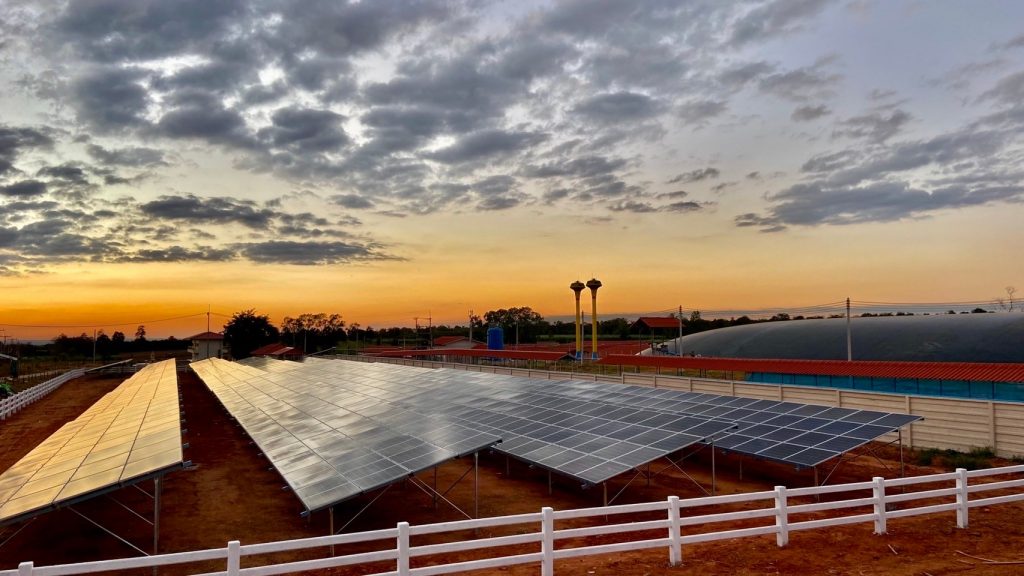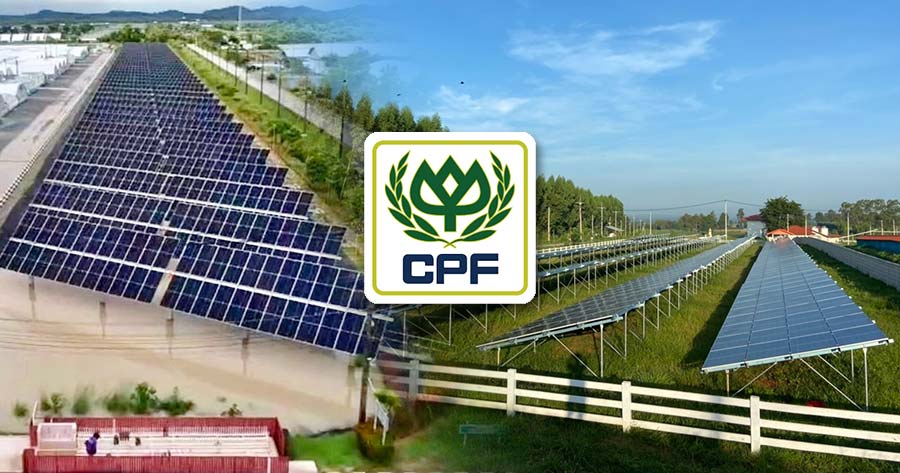Charoen Pokphand Foods Public Company Limited (CP Foods) will increase the installation of solar panels at 180 animal farms, feed mills, and processing plants across Thailand, with a total capacity of 65 MW by 2030. The company is gearing up to reach 100 MW of solar energy in its supply chain by 2025
Mr. Peerapong Krinchai, Executive Vice President – Corporate Engineering at CP Foods, reveals that the company continually promotes solar energy at its operations in all forms, including solar rooftop, solar farm, and solar floating, in an effort to transition to food production that utilizes renewable energy. This complies with the company’s commitment to increase the proportion of renewable energy consumption in its supply chain and strive toward to a net-zero goal.
So far, CP Foods has already completed installing solar energy systems in their second phase. In the first phase, solar panels were installed on the rooftops of 27 factories. 10 solar farms and 2 floating solar sites were installed in additional operations for the second phase.

The company is currently in the third phase, with plans to install solar rooftop and solar floating systems at an additional 67 operations and to set up solar panels on more than 80 locations in the fourth phase.
By 2025, approximately 34 operations of aquaculture business from more than180 operations, including shrimp farms, aquafeed mills, and food processing plants across Thailand, will have installed solar panels to generate electricity for its operations.
This initiative will help the company reduce greenhouse gas emissions from its production by about 44,000 tons of CO2 equivalents.
“CP Foods works promote the use of solar energy throughout the value chain to reduce greenhouse gas emissions and enable cost optimization. The company had earlier this year announced that it had successfully phased out coal use across all of Thailand’s operations in accordance with coal free 2022 campaign. The business substitutes biomass energy for coal.,” Mr. Peerapong said.

The company aims to maximize the proportion of renewable energy consumption in its value chain to 50% by 2030 and to become a food company that utilizes 100% renewable energy across its value chain.
In order to become a food company that uses 100% renewable energy throughout the value chain, the aim is to increase the amount of renewable energy consumption in its value chain to 50% by 2030.
Currently, the company’s renewable energy utilization in its food value chain accounts for 30% of total energy consumption. This is comprised of energy from biogas 30%, biomass energy 68% and solar energy 2%, which helps mitigate 600,000 tons of GHG carbon dioxide equivalent or planting 64 million trees on 320,000 rai of land.





